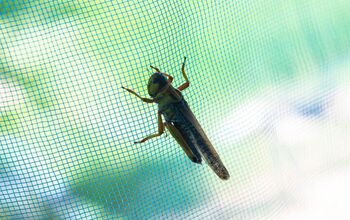How To Start A Stihl Weedeater (Quickly & Easily!)

Stihl is one of the leading power tool companies, and its products are accessible to any homeowner. Their weed eaters, or trimmers, have helped the curb appeal of countless homes with their precision and power. Many new and proud Stihl trimmers are faced with the question; how do you start a Stihl weed eater?
First, you must remove the filler cap and fill the tank with a 50:1 gas to oil ratio fuel. Hold the throttle trigger on the handle, press both levers, and push the starter to the “I”, or start, position. Lay the weed eater flat on the ground, rip the cord, and you can begin your yard work.
Do You Need a Mower Repair Service?
Get free, zero-commitment quotes from pro contractors near you.

How To Start a Stihl Weedeater
If you are unsure of how much fuel is in your Stihl weed eater before using it, remove the filler cap and check the level. Stihl weed eaters are a powerful convenience once you’re able to get it started. Follow along as we explore how you can start up your Stihl weed eater.
Step 1. Fuel Up
If you have a gas-powered Stihl weed eater, you need to fill it with fuel before you can start it. Electric weed eaters, such as the Stihl FSA 130, do not require any fuel, and you can skip this step if you have one. Locate the fuel tank filler on the weed eater and place it flat on the ground so that it is facing up.
Twist and pull out the filler cap so that you can pour gasoline into the tank. The weed eater gas to oil ratio is usually 40:1, but it is 50:1 gas to oil for Stihl units. Slowly pour the fuel into the weed eater and keep an eye on the level so that you don’t overfill it.
You can always check the fuel level while using it by removing the filler cap as well. Once you get the fuel to the proper level, twist the filler cap back in place.
Step 2. Turn It On
Each Stihl weed eater has a lockout lever, or throttle trigger, located on the handle, and you’ll need to hold it. Press both levers with one hand and use your free hand to move the starter switch to the “I” marking. The “I” marking signifies “on”, and the switch will need to be in that position for it to properly start.
Some Stihl trimmers use the marking “start” instead, but both indicate that the trimmer is turned on. Now, you can let go of the levers as your Stihl weed eater is effectively turned on.
Step 3. Choke Position
Identify the choke knob on the black part of the weed eater base near the ripcord. The choke on your Stihl weed eater is usually orange, so it will be easy for you to find. Push the choke lever so that it is at half-choke and squeeze the fuel bulb to draw fuel up into it.
Now, place the trimmer on an even surface on the ground with the grip handle facing downward. Make sure that the trimmer line at the end of the weed eater isn’t blocked or pressed against the ground.
Step 4. Pull the Cord
If you’ve completed the previous steps, you’ve made it to the easiest part of starting a Stihl weed eater. Grab the cord by the grip handle and pull it as many times as it needs to start. You can usually get a Stihl weed eater to start with 3-5 pulls, but it varies with everyone.
The engine will fire once you’ve pulled the cord enough, and you’ll hear it as clear as day. Stihl weed eater engines are not overly loud, but you’ll hear it rumble and feel the handle vibrate. Now, you are ready to trim your yard, and when you’re done, hang it vertically with the engine facing up.
Stihl Weed Eater Won’t Start
If your Stihl or Troy-Bilt weed eater won’t start even if you followed the above steps, something may be wrong. Whether you have a faulty carburetor, a clogged air filter, or a worn-out spark plug, there could be a problem with the hardware. Let’s take a look at some of the reasons that your Stihl weed eater won’t start.
Spark Plug
Your Stihl weed eater won’t start if the spark plug is worn out or damaged, and it may need replacement. Most homeowners and professionals can only get 100 hours of work out of a weed eater spark plug. Open the engine casing of the Stihl weed eater and inspect it for visible debris or damage.
You need to clean the spark plug if the air filter is clogged and is covered in debris. Otherwise, the spark plug may simply be worn out from continual use. Luckily, replacement spark plugs often cost between $2 and $5 and they’re easy to replace.
Clogged Air Filter
The air filter on your Stihl weed eater can become clogged after continual use. Remove the plastic engine housing and you will see the air filter right away. You’ll be able to tell right away if it is clogged, and if it is, carefully cleans the air filter.
A small brush or your hands is enough to clean a Stihl weed eater’s air filter. If the air filter is damaged or clogged beyond repair, you may have to replace it. You can find replacement air filters for $2-$5, and you slide the new one in the old one’s place.
Carburetor
You’ll know that your carburetor is damaged if there is oil leaking or black smoke emits from the trimmer. This can sometimes be caused by using fuel with an improper gas to oil ratio, but it can happen on its own. Unfortunately, this is a fix that you’ll want to be done by a professional, and it will cost you up to $75.
Related Questions
How long do Stihl weed eaters last?
Stihl weed eaters can last for 4-6 years or longer if you properly maintain them. Even lawn care professionals can stretch a Stihl trimmer’s life into 5 or more years of continual use. Use the proper fuel, avoid hitting rough spots and rocks, and clean debris out of the cord regularly.
Are Stihl trimmers worth the money?
Yes, Stihl trimmers are worth the money because of how durable, powerful, and long-lasting they are. Gas-powered trimmers are more efficient for long working times, but electric Stihl weed eaters can save on fuel. You can find efficient Stihl weed eaters for between $140 and $390 that will last you for years.
How should weed eaters be stored?
You should store weed eaters vertically so that the engine is pointed up. Make sure to hang the weed eater from the wall with a peg so that the trimmer line doesn’t touch the ground. However, it is easier for some homeowners to hang their weed eater with the engine pointed downward, and that usually works.
Are weed eater attachments universal?
No, most weed eater attachments are not universal across the board and they are generally brand specific. Different weed eaters within the same brand, such as Stihl, are generally compatible with their accessories. With that said, you can find mostly universal attachments from brands like TrimmerPlus.
Do You Need a Mower Repair Service?
Get free, zero-commitment quotes from pro contractors near you.

Summing It Up
Starting a Stihl weed eater is easy and should take you less than 5 minutes if you follow the steps. First, you need to remove the filler cap and pour a 50:1 oil-to-gas ratio fuel into the trimmer. Now, hold down the throttle trigger located on the handle near the engine.
Hold down both levers near the handle and move the starter switch to where it reads “I” or “Start”. Let go of both levers once the starter switch is in the start position to turn on the weed eater. Lay the Stihl weed eater flat on the ground so that the handle is facing downward and make sure nothing touches the trimmer line.
Now, you simply pull the cord and your Stihl weed eater is ready for you to use. When you are done with your yard work, try to hang up the weed eater by its handle so the trimmer line is facing down. You can easily start a Stihl weed eater without spending much time or trouble, and it’s worth it.
Related Guides

Nick Durante is a professional writer with a primary focus on home improvement. When he is not writing about home improvement or taking on projects around the house, he likes to read and create art. He is always looking towards the newest trends in home improvement.
More by Nick Durante












![10 Best Cordless Leaf Blowers – [2022 Reviews & Ultimate Guide]](https://cdn-fastly.upgradedhome.com/media/2023/07/31/9070789/10-best-cordless-leaf-blowers-2022-reviews-ultimate-guide.jpg?size=350x220)














